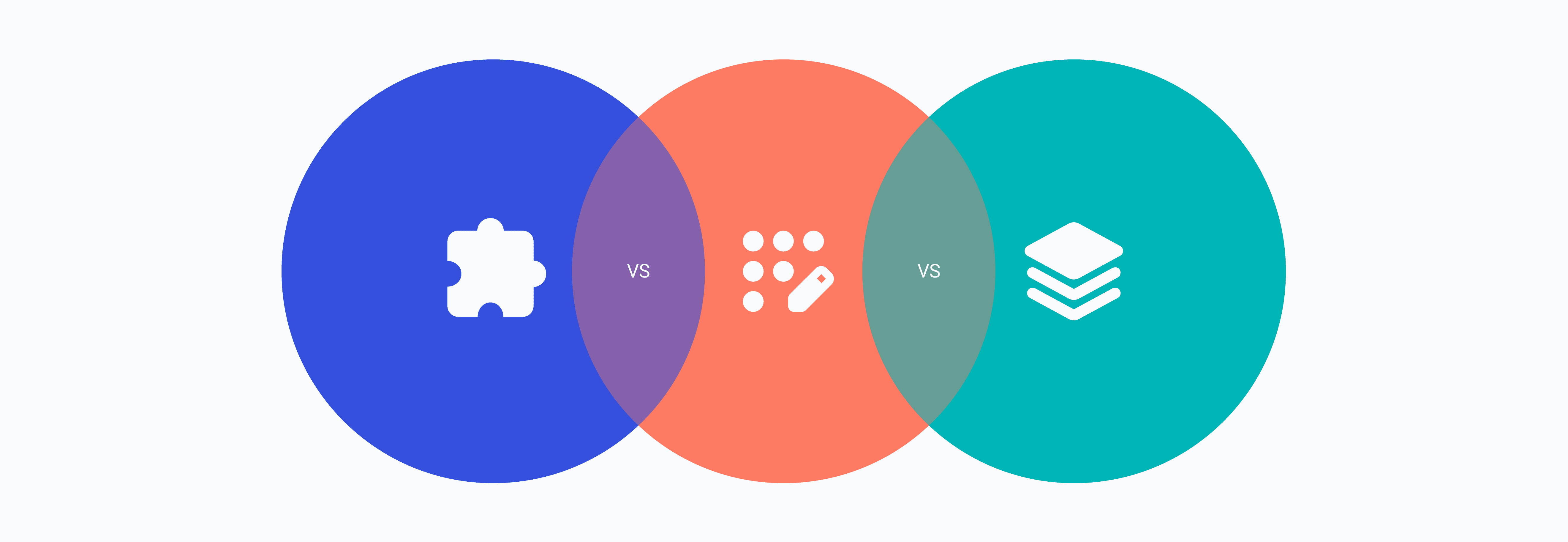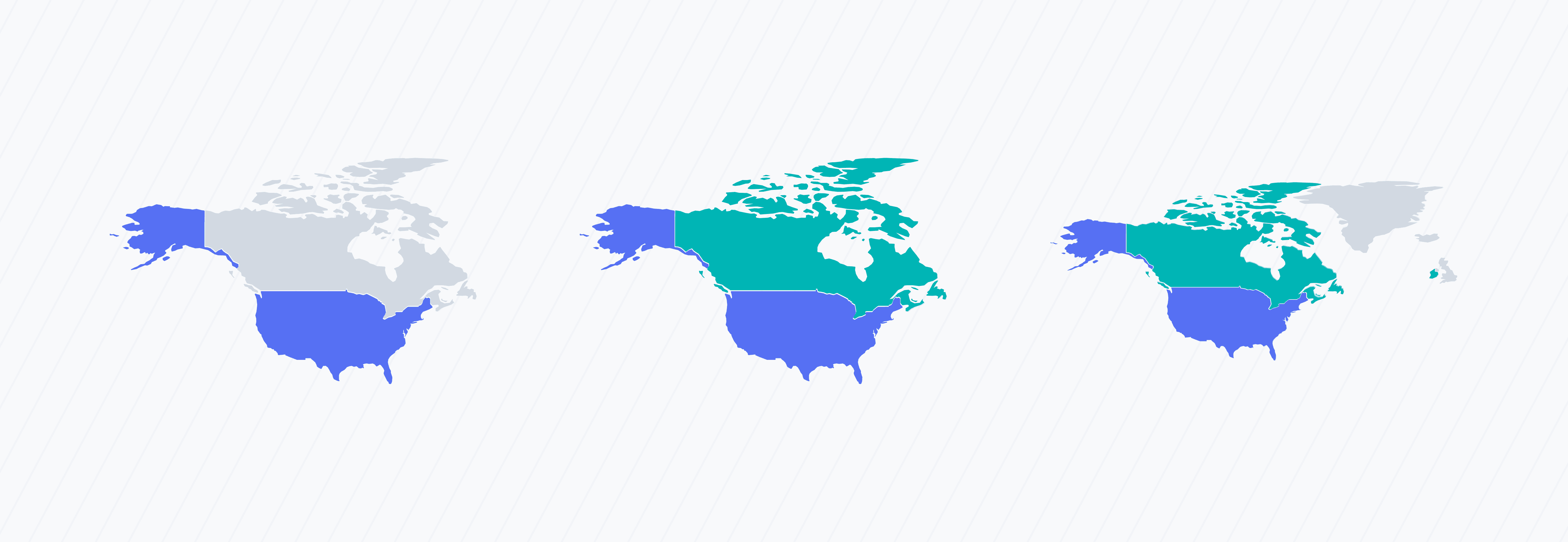Innovative ideas need careful validation to succeed in competitive markets. The process usually begins with a Proof of Concept (PoC) to test technical feasibility, followed by a prototype to evaluate usability. Finally, a Minimum Viable Product (MVP) enables market testing with real users. This article explores the distinct purpose, functionality, and goals of each stage. With a comprehensive comparison, we examine how validation stages facilitate successful launches across various industries, particularly in software development.
The journey from concept to market success depends on testing and refining ideas. Throughout the product validation process, companies evaluate an idea’s feasibility, usability, and alignment with market needs. PoC, prototype, and MVP play a pivotal role in mitigating risks during the development of new solutions.
Each step focuses on confirming the viability of a project. This is especially vital considering that 42% of startups fail due to misjudging market demand, while 56% cite marketing challenges, primarily a lack of product-market fit. For established businesses, validating new initiatives is just as crucial. Remarkably, 91.3% of companies have successfully launched products by leveraging an MVP approach.
In this article, we delve into the essential stages of product validation, emphasizing their application in software development. By exploring these phases, you’ll discover how PoC, prototype, and MVP can reduce risks, validate ideas, and ensure a strong market fit.
What is a Proof of Concept?
The first stage provides a clear “go or no-go” decision for moving forward with a project. A PoC is a small-scale demo or test version designed to address specific technical challenges. It focuses on assessing whether the core technology, concept, or approach is viable before committing to further development. Another key purpose of a PoC is to engage internal stakeholders, such as developers or technical teams, by demonstrating the feasibility of the concept.
Its development goes on during the early exploration phase, preceding prototyping and the MVP stage. They involve short-term efforts, a PoC may last a few weeks or just days. The process is not iterative, as its goal is to validate or disprove technical feasibility.
In software development, a PoC might be a simple mockup to test technical elements like algorithms and system architecture. Also, it finds applications across various industries:
-
Healthcare: Testing the integration of wearable health devices with a hospital system to enable real-time tracking of patient vitals during post-operative care.
-
IoT: Validating a smart thermostat system that dynamically adjusts room temperatures based on occupancy data from motion sensors, ensuring energy efficiency.
-
Finance: Testing an AI-driven credit risk assessment tool to evaluate loan applicants’ eligibility by analyzing financial data and behavioral patterns, ensuring accuracy and fairness in predictions.
Proof of Concept Example
CAPCA, the California Association of Pest Control Advisers, faced significant challenges in managing its continuing education (CE) events. Manual processes for course management, attendee tracking, and reporting often led to inefficiencies, errors, and increased administrative workloads. Recognizing the need for modernization, CAPCA sought a solution to enhance operational efficiency while maintaining compliance with regulatory standards.
One of the tools used to address these challenges was the development of an MVP and a PoC for offline mode. The main objective was to deliver a functional MVP that aligned with the timeline, budget, and quality expectations.
As a result of Coherent Solutions’ development, the new app has transformed CAPCA’s and the wider pest-management industry’s approach to tracking and reporting CE hours. By automating key processes, it improves accuracy, efficiency, and compliance for both sponsors and attendees. Launched in 2024, the app enhanced the CE Hours Reported initiative and became a free, industry-wide resource for professional development and seamless reporting.
The Role of Proof of Concept Accelerators
A PoC accelerator plays a pivotal role in expediting idea validation by providing a structured framework, resources, and expertise to rapidly test a concept’s feasibility. It helps identify potential challenges, refine core functionalities, and gather early feedback from stakeholders. Mentorship from industry experts further enhances the process, addressing technical hurdles and optimizing the concept.
Coherent Solutions’ AI Accelerators streamline PoC development and deployment for applications such as churn prediction, user behavior analytics, and image classification. Our experts offer prebuilt AI pipelines and sample datasets, enabling faster implementation and reducing time to value.
Feasibility Study vs. Proof of Concept
A feasibility study and a PoC serve distinct roles in the project evaluation process, differing in scope and focus. The former provides a comprehensive analysis of a project’s viability, examining risks, costs, technical challenges, market potential, and resource requirements.
It determines whether the project is worth pursuing by addressing broader strategic and operational considerations. For instance, in software development, a feasibility study might evaluate the budget, team capabilities, and regulatory compliance needed to bring a product to market.
In contrast, a PoC focuses specifically on testing the technical and practical feasibility of a particular solution or idea. It adopts an experimental approach to validate core assumptions or address a specific challenge. While a feasibility study assesses overall project viability, a PoC delivers targeted validation of a concept’s functionality.
What is Prototyping in Software Engineering?
Prototyping involves creating a preliminary model or simulation of a product to explore its functionality and design. It provides a tangible representation of the envisioned solution, enabling teams to refine concepts before full-scale development. The software prototype model is vital for testing UI and UX, ensuring navigation and interactions meet user expectations.
Prototyping in software engineering is essential for visualizing features, gathering user feedback, and iterating on the design. An interactive basic version of the software helps identify usability issues and validate requirements early in the development process. Prototypes can be applied across various industries:
-
Healthcare: A telemedicine platform prototype featuring a working video call function and a simulated interface for doctors to access patient records, ensuring usability and seamless integration.
-
IoT: A smart home hub prototype enabling users to control lighting, security cameras, and appliances from a single interface, testing compatibility with protocols like Zigbee or Z-Wave.
-
Finance: A robo-advisor prototype that generates investment recommendations based on mock user profiles, validating algorithm accuracy and user engagement.
Software Prototyping Services
Software prototyping services are specialized solutions designed to transform initial concepts into interactive, tangible models, making them ideal for early-stage product testing. These services include:
-
Interactive Prototyping: Creating clickable prototypes to test functionality and gather actionable feedback.
-
UX Design: Refining the user experience based on early insights to ensure long-term usability and appeal.
-
Iterative Improvements: Facilitating rapid design adjustments in response to user input to align with market demands.
-
Accelerated Development: Fast-tracking the transformation of ideas into functional, testable prototypes.
Prototype vs. Proof of Concept
The distinction between a prototype and a PoC lies in their purpose and scope. A PoC focuses on validating the feasibility of an idea and addressing specific technical challenges or assumptions to confirm viable concepts. Conversely, a prototype emphasizes functionality and design, providing a tangible model to visualize the product, collect user feedback, and refine features through iterative development.
What is an MVP?
Understanding what a minimal viable product is helps businesses prioritize the key features that meet user needs and offer value. An MVP is the most basic version of a final product that includes only core features. This stage goes before full-scale development. It is designed to test the product in the market with real users, gathering feedback and validating market demand. Also, this is a tool to attract investors, according to 53.4% of the surveyed.
MVPs help businesses avoid wasting resources on features that may not resonate with users. Core functionality versions of a product allow companies to collect valuable insights from the audience, iterate on the product, and refine its features to meet market needs. Here are use cases where an MVP is a good choice:
-
Healthcare: A patient monitoring platform that integrates with wearable health devices, providing real-time vitals tracking for 50 patients, basic alert customization, and secure data access for medical staff through a web-based dashboard.
-
IoT: A smart thermostat system that supports dynamic room temperature adjustments for a small office building, offering occupancy-based automation, a companion mobile app for manual control, and basic analytics on energy savings.
-
Finance: A functional digital wallet supporting multi-currency storage, secure transfers, and basic transaction history. Advanced features like real-time exchange rates or expanded payment methods are left for future iterations.
Minimum Viable Product vs. Proof of Concept
The key differences between an MVP and a PoC lie in their purpose, scope, and goals. An MVP is focused on market viability. The main question here is: “Can core features of a product solve real users’ problems?” An MVP is released to gather feedback and validate whether there is demand for the product before investing further. Market interest, user engagement, and the product’s value proposition with actual customers are the main goals for any MVP.
On the other hand, a PoC is primarily focused on technical feasibility. It aims to test whether a particular idea or concept can be implemented, addressing specific technical challenges or validating assumptions. A PoC is not intended to be a functional product; a small-scale, experimental prototype is designed to prove the technical possibility of ideas. In software development, a PoC might test whether the proposed technology works within the existing infrastructure or the implementation of a specific feature. A PoC helps determine if the idea can be made, whereas an MVP determines if it should be made.
PoC vs. Prototype vs. MVP: Comparison
This table provides a detailed comparison of product validation stages. It outlines how each phase serves a different purpose, clarifying the differences in development processes and making it easier to select the right approach based on your project’s needs.
| Aspect | Proof of Concept (PoC) | Prototype | Minimum Viable Product (MVP) |
| Purpose | Test the technical feasibility of an idea or solution. | Visualize and test design, functionality, and user flow. | Validate market demand with a functional product. |
| Focus | Feasibility of core technology, concept, or approach. | User experience, interaction, and early-stage design. | Basic but functional product that solves a real problem. |
| Stage in Development | Early exploration, often before prototyping or MVP stages. | Pre-development phase; after PoC, before MVP. | Early product launch; after prototype and PoC phases. |
| Output |
A small-scale demo or test version. |
A non-functional or semi-functional mock-up or model. | A basic version of the actual product with core features. |
| Audience | Internal stakeholders (e.g., developers, technical team). | Internal and possibly external users for feedback. | Real customers or end-users to validate product-market fit. |
| Duration | Short-term (a few days to weeks). | Short to medium-term (weeks to months). | Medium to long-term (months to a year). |
| Level of Functionality | Low; limited to specific features or technical components. | Medium; may simulate functionality or be partially operational. | High; the product is functional with a minimal feature set. |
| Goal | Prove the viability of the technical solution or concept. | Refine design, user interactions, and usability. | Launch a product to validate its viability in the market. |
| Cost | Low to medium; exploratory costs related to research and development. | Medium; involves design and some functional development. | Higher; involves real product development, testing, and support. |
| Risk Involved | Low; focuses on technical risks and challenges. | Medium; involves design and user feedback risks. | Higher; market and user adoption risks are significant. |
| Testing | Focus on technical testing (e.g., algorithms, architecture). | Usability testing, design validation, and feedback collection. | Market testing with real users, A/B testing, and gathering user feedback. |
| Stakeholder Involvement | Mostly technical team or core development team. | Technical and design teams; some user involvement for feedback. | Full team involvement (product, marketing, development, support). |
| Example | A basic program that proves a new algorithm can work. | A clickable wireframe of a mobile app. | An early version of an app released with essential features. |
| Success Metric | Technical feasibility is proven or disproven. | Validation of design assumptions and user experience. | Product-market fit; early user acquisition and feedback. |
| Iterative Nature | Not typically iterative; a one-time validation process. | Iterative; based on user feedback and multiple design revisions. | Iterative; driven by user feedback for continuous improvement and scaling. |
| Investment | Relatively low, focusing on R&D costs and experimentation. | Medium investment, especially in UX/UI design and some development. | Higher investment, covering full product development and marketing. |
Key Highlights
PoC is typically focused on technical feasibility and involves minimal functionality. It’s often used to demonstrate that a core concept can work in theory.
Prototyping emphasizes user interaction, design, and usability. It provides stakeholders with a more tangible vision of what the product will look like, but it is not yet fully functional.
MVP delivers a working product with core features to actual customers, allowing for real-world testing of market demand and gaining user feedback for further product iterations.

Use Cases and Applications of AI in Data Governance
AI technologies help organizations manage their data assets more efficiently and effectively. Beyond theory, let’s explore how AI transforms data governance in practice. We’ll consider the possible use cases, as well as practical applications.
| Use case | Application |
| Automated Data Classification and Tagging | AI-driven tools automatically categorize and tag data based on content and context. |
| Data Quality Management | Machine learning algorithms identify and correct data inconsistencies, duplicates, and errors. |
| Predictive Data Governance | Advanced models forecast potential data governance issues, enabling proactive management. |
| Enhanced Data Discovery and Cataloging | AI tools automatically discover, index, and catalog data assets for a unified view. |
| Data Privacy Management | Artificial intelligence identifies sensitive data, applies encryption, and enforces access controls automatically. |
| Intelligent Metadata Management | AI generates and updates metadata, improving data discoverability and usability. |
| Automated Data Lineage Tracking | AI visualizes data lineage, showing data flow and transformations across systems. |
| Dynamic Policy Enforcement | Data governance policies are adjusted dynamically based on data patterns and regulatory changes. |
| Fraud Detection and Prevention | AI detects unusual data access patterns or transactions, flagging potential fraud. |
The Bottom Line
Launching on a smaller scale is the most effective way to develop a well-received solution. Each stage addresses specific challenges, involving different levels of investment and stakeholder engagement, forming a comprehensive roadmap for efficient product development.
Tech development teams use them to align technical and business goals, while investors view them as crucial evidence of feasibility and market potential. Research and innovation teams employ these stages to test and refine novel ideas. Also, digital product development teams rely on prototypes and MVPs to gather user feedback and iterate quickly. These tools are essential for any organization seeking to mitigate risks, validate concepts, and deliver successful products.
Achieve your business goals faster and build a foundation for long-term growth with Coherent Solutions’ AI development services. Our experts will proceed with your idea through product validation stages to ensure all necessary requirements.
Contact our consultants' team to see which development validation framework suits your case best.
Why Clients Choose Us
-
Proven Track Record: 30 years of expertise delivering advanced software solutions.
-
Top Talent: A team of 2,000+ highly skilled developers.
-
Trusted Partner: A 95% client retention rate, reflecting our consistent results and reliability.
FAQs on PoC, Prototype, and MVP Difference
-
A Proof of Concept (PoC) is a small-scale project aimed at testing the technical feasibility of a particular idea or solution. It helps determine whether a concept can be turned into a viable product by addressing specific technical challenges before committing to full-scale development.
-
While a PoC focuses on validating the technical feasibility of an idea, a Prototype is an early model of the product that demonstrates its design, functionality, and user experience. Prototypes are used to visualize and test the product's features and gather user feedback, whereas PoCs are more about proving that a concept can work technically.
-
A Minimum Viable Product (MVP) is a functional version of a product that includes only its core features. The MVP is released to early users to validate market demand and gather feedback for future development. It serves as a bridge between initial validation stages (PoC and Prototype) and full-scale product development.
-
- PoC: Use when you need to validate the technical feasibility of a concept before investing in development.
- Prototype: Use when you want to explore and refine the design and functionality of a product, often to gather user feedback.
- MVP: Use when you're ready to test the product in the market with real users to validate demand and gather insights for future improvements.
-
- PoC: Testing the integration of wearable health devices with a hospital system to enable real-time tracking of patient vitals during post-operative care.
- Prototype: Creating a clickable model of a mobile app to test user navigation and interface design.
- MVP: Developing a basic version of a smart thermostat system that adjusts room temperatures based on occupancy data, offering core functionalities to early adopters.
-
Understanding the differences between PoC, Prototype, and MVP is crucial for efficient product development. Each stage serves a specific purpose in validating and refining a product idea, helping to mitigate risks, save resources, and increase the likelihood of market success.



